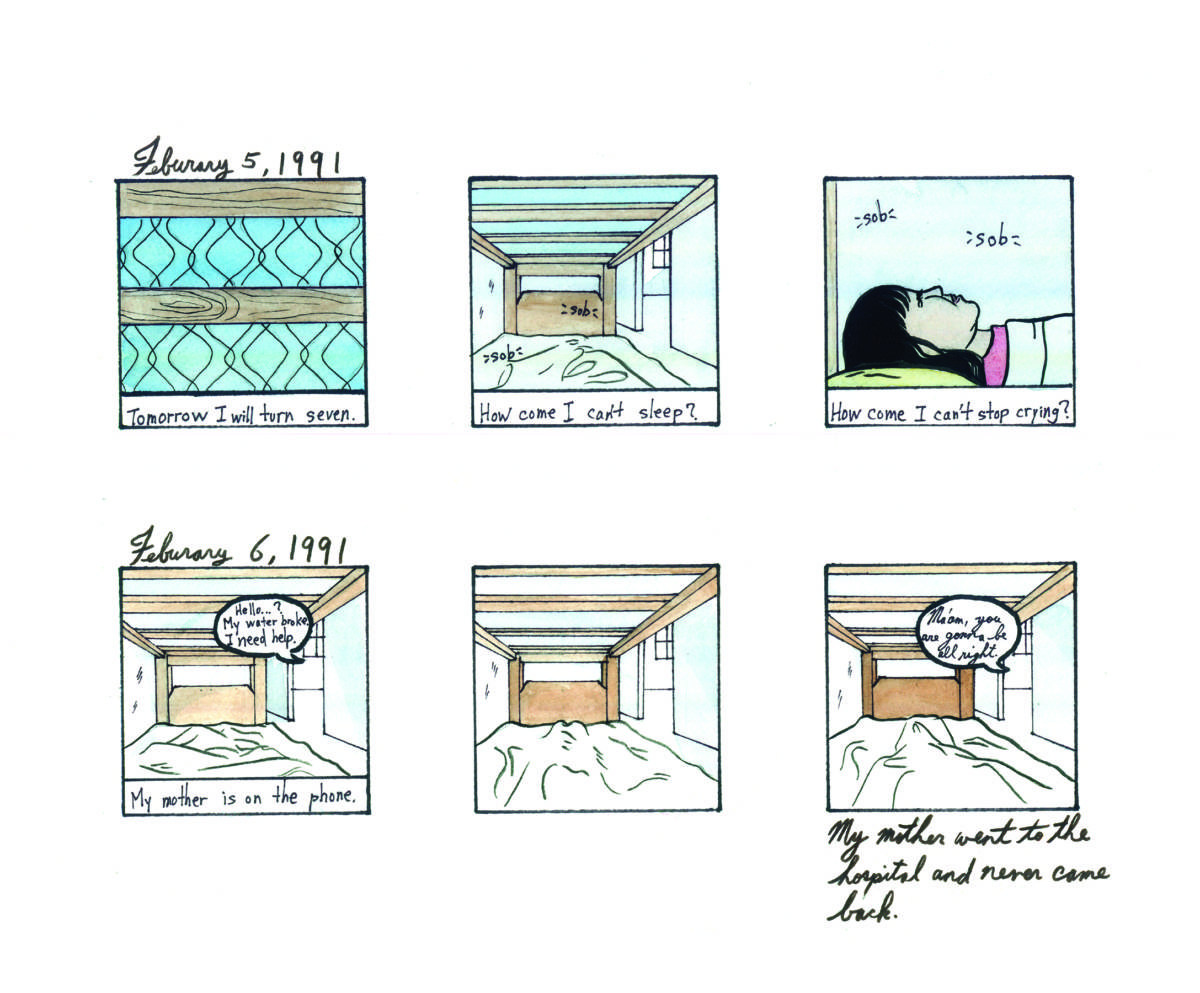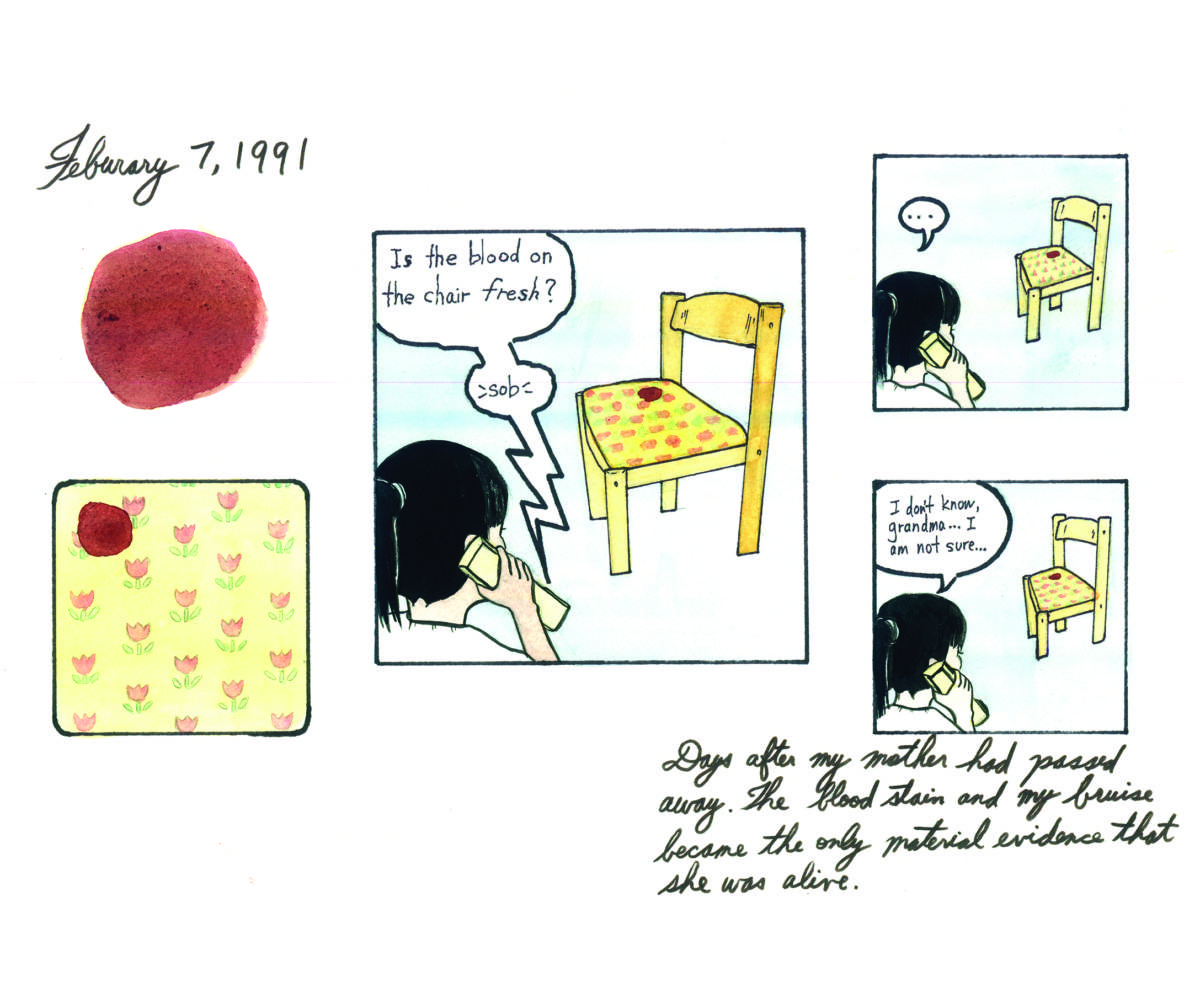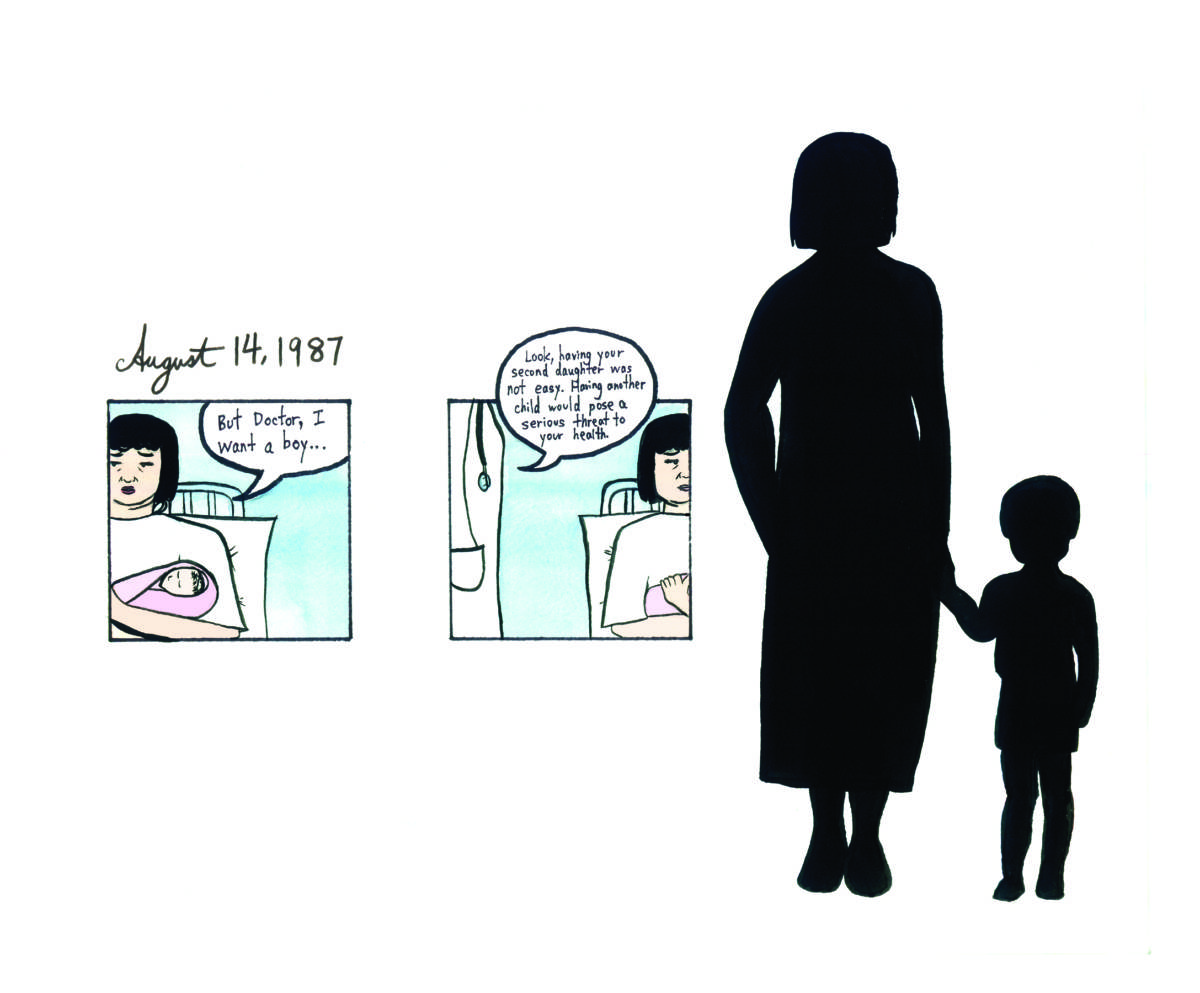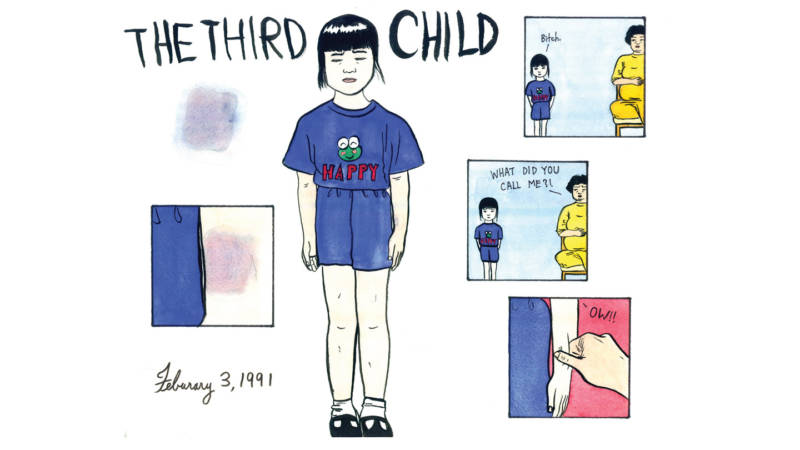Artist Kayan Cheung-Miaw tells stories through art and comics. Born in Hong Kong and raised in New York City’s Chinatown she is now based in the Bay Area.
How do you honor the dead? In my culture we do it with numbers. In a family, each child gets a number “fifth sister, seventh brother,” even the children who die as infants. In this way, we honor and respect those who have passed away, even when those lives were very brief. My father has let go of many traditions, including this one. His third child died during childbirth. But my father never gave him a number, and he has never been acknowledged.
The numeral three is the symbol of this brother. It is also the symbol of my mother’s death, of guilt, of shame, of children growing up too soon. This number three brings up specific memories, specific images. They are memories associated with my mother and brother dying during childbirth. My mother risked, and lost, her life, going against her doctors’ warnings in hopes of having a son.

There are memories of the marks she left just before she died: the bruise on my arm and the blood stain on a chair. There are also the marks she left afterwards: the pain in my grandmother’s voice, the absence in my family, my feelings of shame, guilt and worthlessness as a girl and a daughter.

When talking about my mother’s death, it is easier for me to focus on the aspect of gender oppression in the story: how society’s valuing of sons over daughters means death for some of us. It is harder to share how badly I hurt her by calling her a name, and my own guilt and shame associated with that. Perhaps I was unconsciously full of regret for not being a better daughter to her. The night before she died I had feelings of anxiety.

I stayed awake all night crying for no apparent reason. Even though I cannot explain how, I realize in hindsight that I was anticipating some catastrophe. I chose this theme because I wanted to create a sequential narrative that intertwines political issues, complex personal emotions, and inexplicable events.


